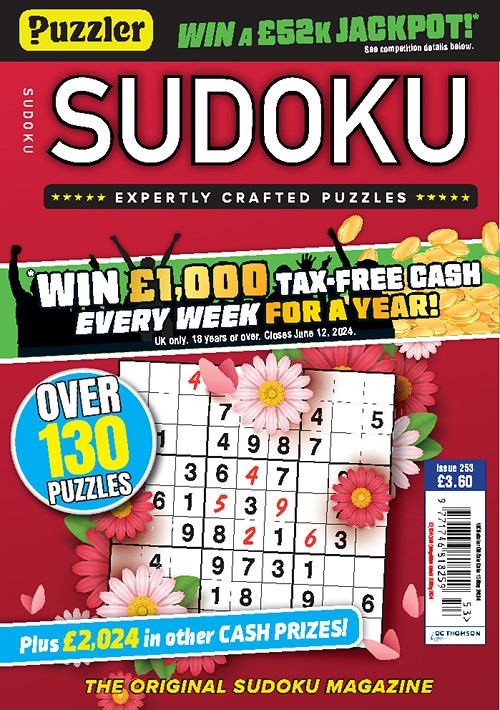Suguru
'The art of simplicity is a puzzle of complexity,' Douglas Horton
The art of simplicity is indeed a puzzle of complexity and Suguru is a simple-to-understand, yet complex-to-solve, work of art.
We first came across Naoki Inaba’s extraordinary puzzles in 2011. He was born in Nagoya in Japan in 1979, and is a prolific and brilliant – and unduly unheralded – creator and compiler of puzzles.
The Romaji version of the Japanese name for this puzzle is Nanba Burokku, which literally translates as ‘number blocks’. Feeling that this translation did not sufficiently reflect the qualities of this puzzle, we renamed it Suguru (meaning ‘number groups’ and, coincidentally, a Japanese boy’s name). Suguru is, we think, a sublime puzzle, with rules even simpler than those of Sudoku and a more involved and satisfying pure logic challenge.
A grid of cells is divided into outlined blocks containing up to five cells. Each cell in an outlined block contains a digit from 1 to n (where n is the number of cells in that block). So, a single-cell block contains the digit 1, a block of two cells contains the digits 1 and 2, and so on. The aim is to fill the grid so that no same digit is touching, not even diagonally.
When designing our own Suguru puzzles we discovered two styles of grid: one with a mostly linear pattern of blocks and one with a cross-based style of blocks. While both styles offer the solver interesting challenges, the latter of these makes for a more satisfying ‘look’ and ‘solve’ to the puzzle.
Don’t be fooled by the size of the grid, and Suguru’s apparent simplicity. This is a puzzle that can, at its most difficult, challenge the most experienced of solvers. Be warned, this is an addictive puzzle like no other, and a uniquely satisfying one.
Featured In
Related Products










